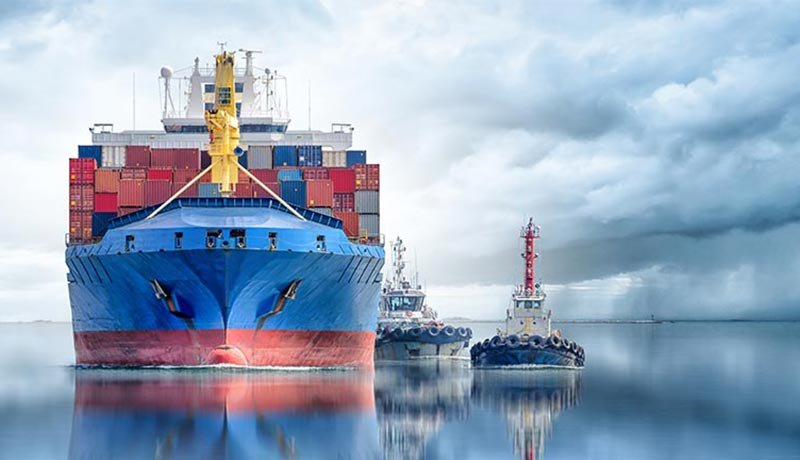23 December 2024, Mon |
7:32 AM

AVEVA is at the helm of developing and deploying cutting edge software solutions to execute and operate more effective projects and provide the marine industry with finely tuned features to connect the business-critical processes of engineering, design, planning, construction and operations. These positive developments come at a time when the COVID-19 pandemic has sent shockwaves across the sector and is having a knock-on effect in terms of the economic stability of the industry.
“The marine industry is a pivotal part of global economic trade, with a staggering 90% of international trade being seaborne,” said Panel Chairperson, David Thomson, Solutions Strategy Manager, for Marine, AVEVA. “As the industry adapts to changes in both the economic landscape and environmental regulations, at AVEVA we have developed tools to optimize project execution, shipyard operations, and vessel performance through digitalization across the marine lifecycle. These tools have been proven in other industries, and we are now adapting and mapping them to the Marine sector.”
Marine industry leaders shared their experiences around embracing technology to enhance the industry during the recent AVEVA World Digital (AWD) conference on 26-28 January 2021. From major greenfield ventures like International Maritime Industries (IMI), the largest integrated, full service maritime yard in MENA with tier focus on Very Large Crude Carriers, Offshore Service Vessels and Rigs, to US-based General Dynamics NASSCO who design and construct support ships for the US Navy, and TechBinder, a bespoke marine technology solutions provider, the consensus was that accelerated digital transformation, incorporating new technologies and development approaches, is not only key to success but also survival in this sector.
Three key themes came to light:
Business leaders have accelerated the digitization of their operations and processes to respond to the impact of the current pandemic on working patterns and to meet fast-changing compliance needs. Business agility is a key strategic focus for digital transformation and the transition to the cloud. Cloud has become an immediate imperative for businesses, providing the capability to scale while achieving balance between accessibility and security.
International Maritime Industries (IMI) is an integrated, full-service greenfield maritime yard, offering solutions to ship and rig customers around the globe from the ground up. Panelist Emad Al Humam, SVP Corporate Services at IMI, commented, “The cloud is no longer a nice to have. It’s now mandatory from a cost perspective, for agility and flexibility of transferring data.”
US-based General Dynamics NASSCO specializes in the design and construction of auxiliary and support ships for the US Navy and oil tankers and dry cargo carriers for commercial markets. Jeff Schaedig, Supervisor, Engineering & Technical Solutions, General Dynamics NASSCO, said, “Agility for NASSCO means being able to move with the changes that come with the process of Government contracts. The industry is waking up to the benefits of the cloud – the FedRAMP process and Government Cloud being two key initiatives in the naval shipbuilding industry.”
Business leaders are adopting new technologies and approaches as well as successfully tackling challenges along the way. The marine industry is evolving and adopting new digital best practices as we move through 2021. Digital twins are a key pillar for innovation.
Emad Al Humam, of IMI, said “The digital twin will help us significantly in achieving business goals which encompass the delivery of smarter products. Our ultimate goal is the digital ship, to achieve cost competitiveness, more efficiency, and better control, especially when it comes to predictive maintenance. And that would make us a pioneer in the market.”
“For AVEVA, digital transformation begins with the digital twin, providing us with living data, both static and real-time, it helps us understand the behavior of the system, and what could happen in the medium to long term, as well as what is happening right now. It is the center of our Digital Transformation strategy for marine customers”, said David Thomson. “Digital ship development, digital shipyard operations, and digital ship operations are all built on the foundation of a complete accurate digital twin, enabling remote monitoring, enhanced production and manufacturing, asset performance management, and workforce transformation, significantly increasing the savings both in terms of ROI and the environment. Data management and comprehension is key”.
Other innovations include those provided by TechBinder, a technology solution allowing shipping businesses to optimize their fleet using data that the vessels already produce. Bram van den Boom, Founding Partner, said: “Building on existing proven technology is one way to reduce risk and internal development time. There is a huge opportunity to take what is already out there and to build on it and adapt.”
The sector shares the challenge of attracting talent from younger generations with other heavy industries. Increasing digital transformation offers a potential platform for attracting the next generation workforce to the marine industries.
Jeff Schaedig said, “Shipbuilding has some of the best problems for young engineers to solve, a challenging environment to build in, large scale equipment, challenging timelines, many changes inline on projects. It is an environment ripe for innovation and improvement.”
Concluding the session, business leaders agreed that the marine industry is in an exciting period of transformation and opportunity and acknowledged that shipping companies are often conservative when it comes to the adoption of new technologies. All agreed, however, that companies that can react with agility and take advantage of digital transformation early will reap the most benefits. David Thomson, Chair of the panel, summarized the challenge and the opportunity facing the marine industry, “In the challenging economic environment we are operating in” said Thomson, “Shipbuilders need to be masters of change.”